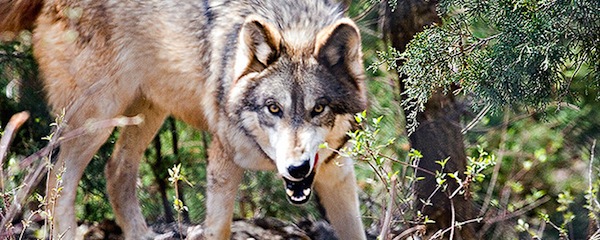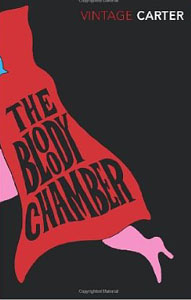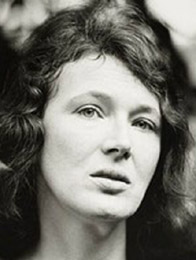
photo by Shawn Kinkade
We are delighted to announce the results of the 2014 THRESHOLDS International Short Fiction Feature Writing Competition…
Our 2014 winner is: Sharon Telfer
Runners-up: Gill Thompson’s ‘A Woman of Words’ and Dan Powell’s ‘Yoshihiro Tatsumi’s The Push Man and Other Stories’
We are delighted to see both these new names and a returning runner-up in this year’s selection, all chosen anonymously for the sheer quality and originality of their essays. Congratulations to all three writers. Below you will find Sharon Telfer’s winning piece. Look out for the features from our runners-up on Thresholds next week.
~
In her essay, shortlisted for the 2014 THRESHOLDS International Short Fiction Feature Writing Competition, Sharon Telfer examines Angela Carter’s transforming tales.
*
Comments from the judging panel
for ‘Wolves at the Hearthside’:
‘This personal response to Carter’s unique story-telling power is an intelligent, artistic and engaging piece of writing’; ‘stylish and sophisticated’; ‘rich, and beautifully written’; ‘full of energy and bringing new life back to a well-discussed collection’.
*
Wolves at the Hearthside
by Sharon Telfer
You’re sitting comfortably. You know how this story starts and how it will end. In between, there will be danger, a quest, seemingly insurmountable obstacles, magical objects, perhaps a helpful talking animal along the way. But you can be sure that at the last everyone – bar the demonstrably wicked – will live happily ever after.
Fairy tales have become comforters, taken before bed, like warm milk, to induce a good night’s sleep. We understand how they work. It is the handsome prince who saves the day, not the heroine’s mother. Red Riding Hood does not wake in the arms of the wolf. Beauty’s love will redeem the Beast, not turn Beauty herself to the wild. We know the way through these woods – until, that is, we enter the forests and castles of The Bloody Chamber, where Angela Carter gives new form to old tales.
In these ten strange and sensual stories, the last thing Carter wants to do is comfort. Here, ‘if you stray from the path for one instant, the wolves will eat you’. We recognise familiar outlines. Red Riding Hood, Beauty and the Beast, Puss-in-Boots all appear in different guises (though only clever, confident Puss gets both to name and tell his own tale). But these are not the tales we grew up with. There are no fairies here. We are in the company of darker beings, of wolves, vampires and werewolves, of men who murder their wives or gamble their daughters away.
“My intention was not to do ‘versions’,” said Carter, in an interview six years after The Bloody Chamber was published in 1979, “but to extract the latent content from the traditional stories.” Carter strips her characters bare, flays them even, to uncover some richer, more essential self. It is, at times, quite literal, as in this description from the heroine in ‘The Tiger’s Bride’:
…each stroke of his tongue ripped off skin after successive skin, all the skins of a life in the world, and left behind a nascent patina of shining hairs … I shrugged the drops off my beautiful fur.
The collection is, of course, a landmark in feminist fiction. The ‘bloody chamber’ of the title resonates beyond the execution room of the first story. It reappears in some form throughout the book, a complex symbol of the ambiguous power and place of female sexuality. In the the 2012 Folio Society Edition, Marina Warner describes Carter’s assertive female characters:
She rewrites the conventional script formed over centuries of acclimatising girls – and their lovers – to a status quo of captivity and repression, and issues a manifesto for alternative ways of loving, thinking and feeling…
 In ‘The Company of Wolves’, the girl on the cusp of womanhood feels ‘she has inside her a magic space the entrance to which is shut tight’. But she also ‘has her knife and she is afraid of nothing’; she is ‘nobody’s meat’. And it is not just the girls whose roles have changed. In fairy tales, often the heroine’s mother dies before many classic tales even begin. Here, she blazes to her daughter’s rescue, planting a dead shot between the villain’s eyes. In ‘The Werewolf’, Red Riding Hood’s grandmother isn’t eaten by the wolf or, as in more squeamish modern versions, rescued from under the bed. Grandma is the wolf.
In ‘The Company of Wolves’, the girl on the cusp of womanhood feels ‘she has inside her a magic space the entrance to which is shut tight’. But she also ‘has her knife and she is afraid of nothing’; she is ‘nobody’s meat’. And it is not just the girls whose roles have changed. In fairy tales, often the heroine’s mother dies before many classic tales even begin. Here, she blazes to her daughter’s rescue, planting a dead shot between the villain’s eyes. In ‘The Werewolf’, Red Riding Hood’s grandmother isn’t eaten by the wolf or, as in more squeamish modern versions, rescued from under the bed. Grandma is the wolf.
Such narrative rewiring electrifies the book. But Carter’s style of telling is just as transformational. She was emphatic that these were not ‘adult fairy tales’. So, what separates the telling of a fairy tale and a short story? “Fairy tales don’t come whole and unaltered from the minds of individual writers,” says Philip Pullman, introducing his own 2012 retellings of the Brothers Grimm, “uniqueness and originality are of no interest to them.” By contrast, Carter reportedly said: “The short story is not minimalist, it is rococo. I feel in absolute control.”
There is no mistaking Carter’s unique voice. In true rococo fashion, she expertly layers clause on clause.
“Nothing to it, once you know how, rococo’s no problem,” says Puss, lightly vaulting up the stucco curlicues of a palace.
You won’t find many semi-colons in a fairy tale; The Bloody Chamber bristles with them. In Carter’s hands, they bring together rich, sensory images, but these connections don’t flow, they jump; we cannot be sure what will come next. Travelling to Bluebeard’s castle, the heroine is aware of:
Lights; clank of metal; a voice declaring the name of an unknown, never-to-be visited station; silence of the night; the rhythm of his breathing, that I should sleep with, now for the rest of my life.
Against such elaborate, often elusive, paragraphs, she sets short phrases of unambiguous clarity and force. ‘My father lost me to The Beast at cards’, is the single-sentence paragraph that opens ‘The Tiger’s Bride’. Such linguistic rhythm makes for a pace at once driving and disorientating.
‘A good [fairy] tale,’ says Pullman, ‘moves with a dreamlike speed from event to event, pausing only to say as much as is needed and no more.’ Carter does this too, to great effect. Often she drops the verb altogether. ‘The telephone shrilled; for her. Her father. Such news!’ But elsewhere, her use of tenses and voices perturbs; she deliberately makes them jostle and slip. When time finally catches up with the vampire in ‘The Lady of the House of Love’, the timelines in the prose blur:
She is not sleeping.
In death, she looked far older, less beautiful and so, for the first time, fully human.
I will vanish in the morning light: I was only an invention of darkness.
And I leave you as a souvenir the dark, fanged rose…
When are these stories set? We cannot be entirely sure. They encompass deep, medieval forests, feudal aristocrats and ancient creatures, but also trains, bicycles, cars and telephones. ‘The Lady of the House of Love’ ends as the First World War begins. Cultural references in some stories also suggest the early twentieth century. Others seem rooted much further back. The shortest and eeriest tale, ‘The Snow Child’, is located in time only by its first word – ‘Midwinter’ – in space only by ‘the road’. Such placement out of time is the quintessence of fairy tale, but it’s a formula we understand; it rarely feels ambivalent. ‘All we need is the word ‘Once…’ and we’re off,’ says Pullman. In The Bloody Chamber, things feel more individual and distinct, but at the same time less certain, never quite pinned down. It is a shape-shifting world of shadow and reflection.
Written separately before being gathered together for publication, these stories still feel very much a collection. The tales are interconnecting, like the rooms in the Beast’s palazzo:
Through archways and open doors, I glimpsed suites of vaulted chambers opening one out of another like systems of Chinese boxes into the infinite complexity of the place.
White, red and black dominate the colour palette. Roses and lilies abound but rarely flourish. Bluebeard seems to his bride ‘like one of those cobra-headed funereal lilies whose white sheaths are curled out of a flesh as thick and tensely yielding to the touch as vellum’. Coldness casts a chill everywhere. The Werewolf’ opens: ‘It is a northern country; they have cold weather; they have cold hearts.’ The story of ‘The Tiger’s Bride’ moves to ‘the treacherous South, where you think there is no winter but forget you take it with you’. In such cold, the persistent allure of warm, living fur is hard to resist, despite the teeth and claws that come with it.
It’s almost thirty years since I first read these stories. Then, I was just a little older than most of the heroines. Now, I’m approaching the age Angela Carter was when she died, too young, of cancer, in 1992. Groundbreaking when published, its very impact means the collection is stalked by categorisation and cliché now. Theorists fret over whether it is second- or third-wave feminism. An A-level set text comes trimmed with neat revision cards: ‘Carter is interested in social change and individual empowerment, so her tales explore class, politics, social conventions and morality’ (York Notes).
 The world has changed around these tales. Bluebeard’s hidden torture chamber is a standard starting point for your average detective drama. Today’s Disney heroines are ‘feisty’ girls, more likely to rescue the prince than to need saving themselves. Vampires drift wanly through American high schools. For all their sensuality, Carter’s stories can sometimes feel a little earnest and, with the exception of ‘Puss-in-Boots’, can lack the bawdy humour and lust for life of her later work.
The world has changed around these tales. Bluebeard’s hidden torture chamber is a standard starting point for your average detective drama. Today’s Disney heroines are ‘feisty’ girls, more likely to rescue the prince than to need saving themselves. Vampires drift wanly through American high schools. For all their sensuality, Carter’s stories can sometimes feel a little earnest and, with the exception of ‘Puss-in-Boots’, can lack the bawdy humour and lust for life of her later work.
But when I first read them, they bowled me over. I’ve dipped into these stories many times over the years. Looking at them closely again now, their unique voice still feels so powerful. Carter’s boldness of subject and stylistic verve remain hard to find in contemporary writing. Her exploration of the erotic charge of young girls – and the penalty they may pay because of it – still unsettles, perhaps even more so today when real accounts of abuse fill the news. Even now, few writers dare to use the word ‘cunt’ as a simple descriptive noun. Rereading her always makes me wish she was with us still, and writing. What would she have to say of the girlish cults of pink and princesses, of the Duchess of Cambridge and Lady Gaga, of ‘sexting’ and girls in gangs, of what it is to be an ageing woman?
Above all, I feel she urges me to be bolder, both as a writer and a reader. To read Carter is always to be challenged. Don’t stick with the old, familiar stories, she tells us. There are new stories to tell and new ways of telling old tales. Listen carefully, she warns, the stories we think we hear may not be the ones that we are actually being told.
So, sit as comfortably as you can. Switch off your smartphone, your iPad, the television. Turn the lights low. Just you, in your room, with this slim book. Open it. Enter the forest, unlock the chamber, and discover whatever twists and turns Carter’s imagination – and your own – may have set lurking there. There’s no point trying to stay safe. After all, ‘The wolves have ways of arriving at your own hearthside’.


3 thoughts on “2014 Competition Winner”
Comments are closed.